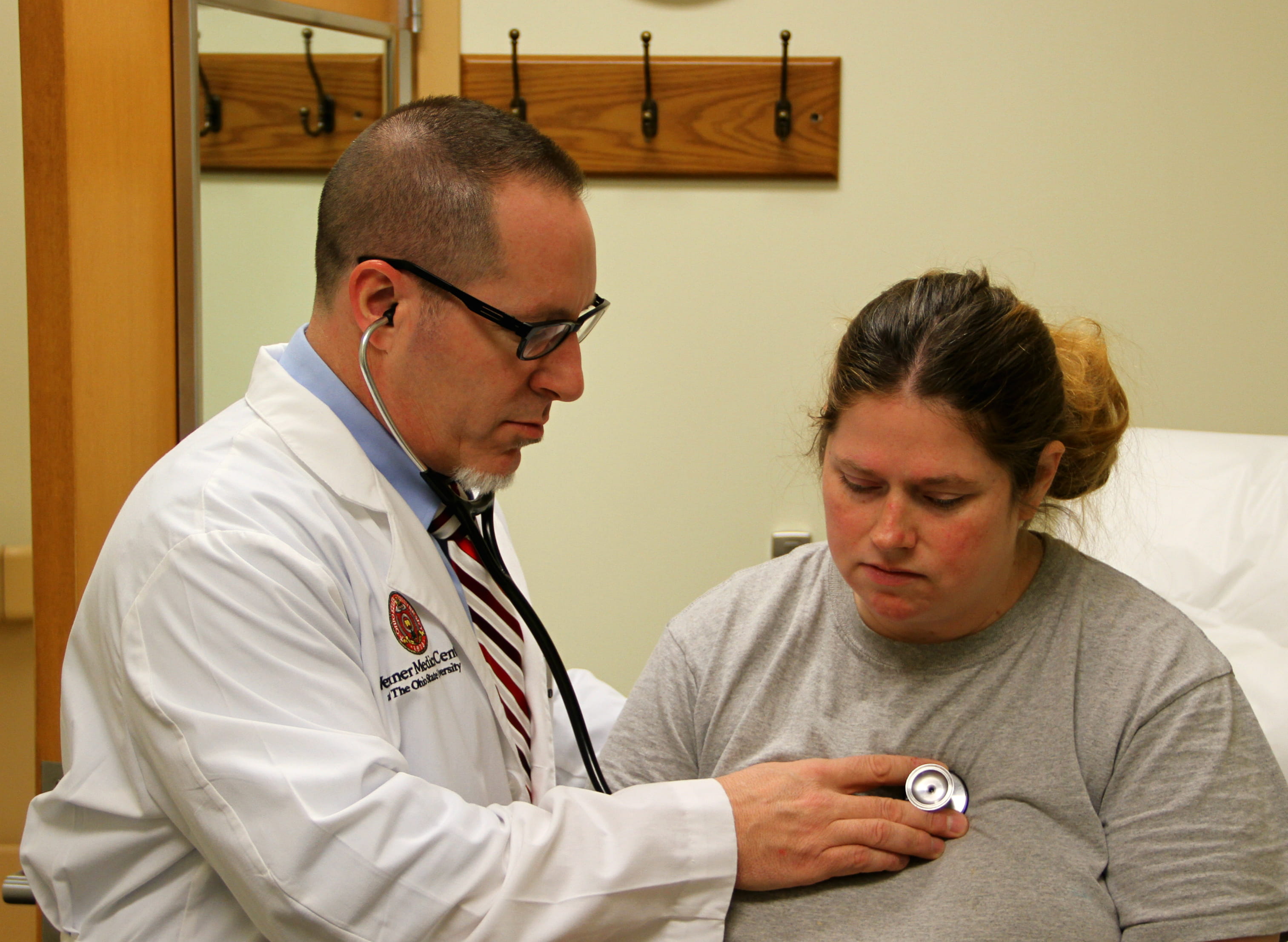January 31, 2013

COLUMBUS, Ohio –The birth rate for women over 40 years old is the highest it has been in 50 years as women wait longer to start families. Combined with the fact that approximately 500,000 women live with congenital heart disease in the United States, the result is more mothers have or develop heart disease during pregnancy.
The Ohio State University Wexner Medical Center’s adult congenital heart disease program, a leading program in the U.S. which treats men and women with congenital heart disease, specializes in helping women with heart problems who are pregnant or trying to become pregnant. As a result, more than 500 healthy babies have been born to mothers with heart disease with help from Ohio State’s heart disease experts.
“Even in healthy women, the workload on the heart and circulation is much greater during pregnancy,” said Dr. Curt Daniels, director of the adolescent and adult congenital heart disease program at Ohio State’s Wexner Medical Center and Nationwide Children’s Hospital. “So for women with preexisting heart conditions, or who may not know they have heart disease, the heart, in some circumstances may struggle or even fail with the changes that occur during pregnancy.”
Nikki Westphal, 34, of Hilliard, Ohio, is part of a large and growing number of women born with congenital heart disease who are living longer and are able to start families of their own. According to the Adult Congenital Heart Association, 90 percent of children born with a heart defect will now survive into adulthood.
Nikki was born with aortic stenosis, a narrow and defective aortic valve. As she was preparing for heart surgery to replace her valve, preliminary tests led to a surprise – Nikki found out she was pregnant. Multiple physicians told her that her heart condition made it impossible for her and the baby to survive the pregnancy.
Nikki’s research led her to Ohio State’s adult congenital heart disease program where Daniels and other heart specialists explained that the only way she could keep her baby would be to risk open heart surgery while pregnant. Not only was her aortic valve narrow, she had also developed an unrecognized life threatening aortic aneurysm.
“It was worth the risk to have the possibility of keeping my baby, instead of the 100 percent chance of losing him if I didn’t have the surgery,” said Nikki, who decided to have the open heart surgery during her pregnancy.
A team of congenital heart disease specialists, cardiothoracic surgeons, high risk obstetricians and anesthesiologists at Ohio State worked collaboratively to save Nikki’s baby and fix her heart. Four months pregnant, she successfully had her aortic valve replaced and aortic aneurysm repaired. She then carried the baby full-term, giving birth to a healthy son, Conor.
“Before I went into labor, I felt pretty comfortable that everything would be fine because of how well my heart surgery went,” said Nikki. “I had a lot of confidence in my doctors.”
Nikki's doctors continued to keep a close eye on her right after the delivery, because as Daniels points out, that's still a risky time for new mothers with heart disease.
“We are concerned about women with heart disease not only during pregnancy and at delivery, but also immediately after delivery and for the next several days because it is a shock to the system,” said Daniels. “The heart can fail very rapidly, arrhythmias develop or aneurysms can tear or rupture.”
Many women do not learn that they have these heart complications until they become pregnant and start experiencing symptoms. Daniels suggests to women who have a family history of heart disease or were born with congenital heart disease that they talk with their doctor and consider getting specialized evaluation and testing before they try to start a family.
# # #
For broadcast quality video and photos, go to: http://bit.ly/VXHvcJ
Contact: Gina Bericchia, Medical Center Public Affairs and Media Relations, 614-293-3737 or Gina.Bericchia@osumc.edu

